
Moroccan Military Forum alias FAR-MAROC
Royal Moroccan Armed Forces Royal Moroccan Navy Royal Moroccan Air Forces Forces Armées Royales Forces Royales Air Marine Royale Marocaine
|
|
| | US Air Force - USAF |  |
|
+44yassine1985 annabi Anassfra93 victor g camps mourad27 augusta Inanç PGM osmali godzavia docleo leadlord Northrop jf16 farewell klan brk195 Gémini FAMAS GlaivedeSion lida thierrytigerfan iznassen Nano Cherokee MAATAWI H3llF!R3 reese Yakuza Proton Fremo Mr.Jad moro jonas rafi Fox-One Samyadams Seguleh I Leo Africanus Viper aymour SnIpeR-WolF [USAF] RED BISHOP Fahed64 48 participants | |
| Auteur | Message |
|---|
Invité
Invité
 |  Sujet: US Air Force - USAF Sujet: US Air Force - USAF  Dim 19 Oct 2008 - 16:43 Dim 19 Oct 2008 - 16:43 | |
| Rappel du premier message :l´USAF plane de retirer +300 jets,dont: -137 F-15 - 177 F-16 -9 A-10s 11 ans avant leur date,pour epargner 3,4B$ et accelerer ainsi les F-22/35 mais ca doit dabord passer le congress et le futur president doit signer! - Citation :
- US Air Force eyes fighter cuts to boost modernization
Wed Oct 15, 2008 5:51pm EDT
WASHINGTON, Oct 15 (Reuters) - The U.S. Air Force is seeking to retire early more than 300 fighter aircraft next year to save $3.4 billion in the hope of funding advanced Lockheed Martin Corp (LMT.N: Quote, Profile, Research, Stock Buzz) fighters and other modernization efforts, a published report said on Wednesday, citing internal Pentagon documents.
The plan would retire 137 F-15 and 177 F-16 fighters plus nine A-10 close air support attack aircraft as much as 11 years before the end of their scheduled useful lives, InsideDefense.com, an online news service, reported.
"Without accelerating these retirements, we are left with a larger, less-capable force unable to penetrate anti-access environments," the Air Force was quoted as telling John Young, the Pentagon's top arms buyer, in defense of a fiscal 2010 spending plan it submitted in August.
"Anti-access" is Pentagon jargon for spots defended by advanced surface-to-air missiles and state-of-the-art fighters such as those used or planned by Russia and China.
A key Air Force concern is what it calls a potential fighter gap until Lockheed's radar-evading F-35 Joint Strike Fighter is produced in large numbers.
An Air Force spokesman said it would be inappropriate to discuss an internal working document that will continue to change until it is incorporated into the next president's fiscal 2010 budget submission.
The document was quoted as saying an Air Force analysis showed a "smaller but modernized fighter force, when coupled with a robust bomber fleet, can effectively bridge the gap until the F-35 can be produced in required numbers (ramping to 110) and the F-22 can be modified to a common configuration."
Air Force officials have said they plan to increase F-35 production over the next five years to address the fighter gap, InsideDefense.com said.
Two F-35s have entered flight test, two are in ground test and 17 are in various stages of assembly, including the first two production-model jets scheduled for delivery to the U.S. Air Force in 2010, Lockheed said last month.
The president of the Air Force Association, retired Lt. Gen. Michael Dunn, said it remained to be seen if Congress would let the Air Force get rid of so many aircraft so early and if Pentagon leaders would grab the savings to fund competing priorities within other armed services.
"There will have to be a lot of dialogue inside the Pentagon between the Air Force and the office of the secretary of defense, probably the secretary himself, before a decision is made," Dunn, a former president of the Pentagon's National Defense University, said in a telephone interview.
Old warplanes typically involve high maintenance costs and may require big outlays for structural upgrades. Still, lawmakers often have blocked Air Force attempts to retire aging warplanes early, partly to preserve jobs -- in their voting districts -- at bases from which they are flown.
In the fiscal 2010 budget request being readied at the Pentagon for the next president, the Defense Department is seeking ways to continue production of Lockheed Martin's F-22, the top U.S. dog fighter, while boosting F-35 output to capture economies of scale quickly, Pentagon officials have said.
The final say on whether to go on building the F-22 is being left to the next president, who is to be elected Nov. 4 and take office Jan. 20 -- only weeks before the administration's budget request normally is sent to Congress.
The proposed early retirements represent accelerations of seven years in the case of the F-15, six years for the F-16 and 11 years for the A-10, according to the document cited by InsideDefense.com.
The savings would fuel a push to modernize the Air Force's bombers, late-date fighters and go toward a new "nuclear-specific" B-52 bomber rotational squadron and Northrop Grumman Corp'a (NOC.N: Quote, Profile, Research, Stock Buzz) RQ-4 Global Hawk unmanned aerial system expansion, the document was quoted as saying. (Reporting by Jim Wolf; editing by Carol Bishopric, Gary Hill) http://www.reuters.com/article/marketsNews/idUSN1531730620081015?pageNumber=2&virtualBrandChannel=0 |
|   | |
| Auteur | Message |
|---|
MAATAWI
Modérateur

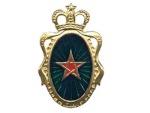
messages : 14756
Inscrit le : 07/09/2009
Localisation : Maroc
Nationalité : 
Médailles de mérite :
 
 
 
 |  Sujet: Re: US Air Force - USAF Sujet: Re: US Air Force - USAF  Ven 24 Déc 2010 - 17:37 Ven 24 Déc 2010 - 17:37 | |
| | |
|   | | MAATAWI
Modérateur


messages : 14756
Inscrit le : 07/09/2009
Localisation : Maroc
Nationalité : 
Médailles de mérite :
 
 
 
 |  Sujet: Re: US Air Force - USAF Sujet: Re: US Air Force - USAF  Ven 24 Déc 2010 - 17:53 Ven 24 Déc 2010 - 17:53 | |
| | |
|   | | MAATAWI
Modérateur


messages : 14756
Inscrit le : 07/09/2009
Localisation : Maroc
Nationalité : 
Médailles de mérite :
 
 
 
 | |   | | MAATAWI
Modérateur


messages : 14756
Inscrit le : 07/09/2009
Localisation : Maroc
Nationalité : 
Médailles de mérite :
 
 
 
 |  Sujet: Re: US Air Force - USAF Sujet: Re: US Air Force - USAF  Mar 4 Jan 2011 - 14:01 Mar 4 Jan 2011 - 14:01 | |
| - Citation :
USAF C-17 marks 2 millionth flight hour during airdrop
January 3, 2011 by Rob Vogelaar · Leave a Comment
 SCOTT AIR FORCE BASE, Ill. (AFNS) – last month, the C-17 Globemaster III celebrated its two millionth flight hour. SCOTT AIR FORCE BASE, Ill. (AFNS) – last month, the C-17 Globemaster III celebrated its two millionth flight hour.
As a testament to the C-17 mission tempo, the aircraft passed its two millionth flight hour just four years after passing its first million-hour mark, and the first million hours took 16 years to reach.
Although Air Mobility Command officials estimate the international C-17 fleet passed the milestone on Dec. 14, the achievement was commemorated on a Dec. 10 airdrop mission out of Bagram Airfield, Afghanistan.
“It’s definitely an honor,” said Capt. Rick Kind, the aircraft commander of the airdrop mission. “I think it’s great the Air Force is utilizing us for what we’re designed to do and using us at full capacity. We’re flying nonstop, but it’s great flying.”
Air Force schedulers have doubled the number of airdrops in the U.S. Central Command area of responsibility every year since 2006. Helping fellow service members in remote locations is what motivates C-17 crews to meet the high demand. For example, air deliveries keep approximately 970 trucks off dangerous roads per month.
A few weeks prior to the milestone mission, Capt. Kind and his crew had delivered fuel to Soldiers. They were later informed on the radio that “if they hadn’t received fuel that day, they were basically gonna’ go dry.”
“In my perspective, combat airdrops in Afghanistan are some of the best flying I’ve ever known,” said the pilot, who’s flown the C-17 since 2003. “We’re making a difference with U.S. and coalition troops out on the ground in middle of nowhere. Anything they need, which in this case is fuel, we deliver.”
The two-million hour total includes C-17 hours flown by international partners. However, approximately 94 percent of the hours was flown by U.S. Air Force C-17s, said Capt. Mark Szatkowski, the AMC C-17 weapon system manager.
The C-17 fleet is helping to meet the demand of the current high operations tempo as it blurs strategic and tactical lines in theater, conducting airdrop and air land missions, flying into unimproved airfields and consistently being re-tasked for emergency aeromedical evacuation and humanitarian relief missions.
One reason for the C-17′s success is its versatility in both strategic and tactical airlift operations. The C-17 has broken airdrop records monthly during the past year, keeping an estimated 970 trucks off of hazardous roads per month. It also plays an integral role in airlift and the 98 percent survivability rate in aeromedical evacuation operations.
The aeromedical evacuation continuum success rate depends on a series of dominoes falling on time and in order, according to Col. Chris Benjamin, the commander of Task Force MED-EAST Afghanistan.
“Each link in that chain has to be sound for the really critically injured to have a chance,” he said. He said that if he needs to get a patient to follow-on care in Germany or the U.S., “I don’t want to have to wait until tomorrow.”
Also dependent on the C-17′s reliability are the aerial porters at the busiest military airport in the world. According to Lt. Col. Kirk Peterson, the commander of the 455 Expeditionary Aerial Port Squadron at Bagram, his Airmen and the maintenance personnel there can work seven C-17s at one time to turn them around for their next missions.
Aerial porters at the Afghanistan airfield handle approximately 100 missions, 1,500 passengers and 800 short tons of cargo daily, based on third-quarter figures, the commander said. More than 83 percent of the cargo moved at Bagram moves in three days or less.
“One goal of air mobility is to see how quickly you can move cargo. The C-17 really enables that,” Colonel Peterson said.
During the week prior to the commemorative mission, Bagram Airmen saw 77 Globemasters.
Another goal of air mobility is flexibility. Integral to the hectic symphony at Bagram is the ability to re-task missions, such as reassigning a mission airlifting cargo to become an airdrop or aeromedical evacuation mission.
According to Bagram’s airfield nerve center, the Air Terminal Operations Center, 42 percent of missions that flow in receive line changes, which means they get re-cut for another mission; and many of these are C-17s.
This flexibility enabled C-17s to be among the first aircraft on scene in Pakistan and Haiti this year, helping victims of natural disasters. Captain Kind was part of the second C-17 crew in Haiti after the earthquake.
“Our aircraft was diverted from its original mission this summer to take an urban rescue team from New York to Haiti to help recover earthquake victims there,” Captain Kind said. “We were there right after the earthquake happened.
Ever since the first C-17 Globemaster III was delivered to the Air Force more than 17 years ago, the plane has become a centerpiece and “workhorse” of the Air Force’s airlift force.
In 2010 alone, C-17s and the Airmen who fly and maintain them have supported humanitarian operations in Haiti and Pakistan, a surge of 30,000 additional troops to Afghanistan, and are part of a record-breaking year for airdrops in Afghanistan.
The Dec. 10 milestone mission was a low-cost, low-altitude assignment to deliver 70 thousand pounds of fuel to a remote location in Afghanistan. The aircraft, dubbed with the call sign “Moose 75,” was from Charleston Air Force Base, S.C.. The air crew comprised Airmen deployed with the 816th Expeditionary Airlift Squadron in Southwest Asia. Its members included Captain Kind, Capt. Patrick Murphy, Capt. Jordan Leicht and Senior Airman Carrie Symons from McChord AFB, Wash.; as well as Staff Sgt. Paul Trowbridge from Hickam AFB, Hawaii, and Staff Sgt. Jason Fatjo from Charleston AFB, S.C.
(Master Sgt. Scott Sturkol, AMC Public Affairs, contributed to this story.)
Source: USAF
Photo: Rob Vogelaar | |
|   | | MAATAWI
Modérateur


messages : 14756
Inscrit le : 07/09/2009
Localisation : Maroc
Nationalité : 
Médailles de mérite :
 
 
 
 |  Sujet: Re: US Air Force - USAF Sujet: Re: US Air Force - USAF  Jeu 6 Jan 2011 - 11:53 Jeu 6 Jan 2011 - 11:53 | |
| - Citation :
RE2 to Supply Small Robot Toolkit for Use in USAF UGV
Northrop Grumman subsidiary Remotec will receive small robot toolkit (SRT) from intelligent modular manipulation systems developer Robotics Engineering Excellence (RE2) to upgrade the manipulation capabilities of the US Air Force Andros HD-1 unmanned ground vehicle (UGV).
Remotec recently received a contract from the US Air Force Air Combat Command to upgrade its fleet of Andros HD-1 UGVs to help counter evolving threats from improvised explosive devices (IEDs).
RE2 developed the end segment of the upgraded Andros HD-1 manipulator arm, which features a rolling wrist and gripper that is able to lift and manoeuvre heavy objects up to 125lb, such as a 155mm shell.
RE2 is a Carnegie Mellon spinoff specialising in agile defence robotics, with an emphasis on intelligent modular manipulation for mobile robotic platforms.
airforce-technology | |
|   | | Fremo
Administrateur

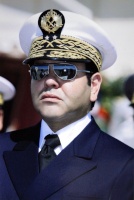
messages : 24818
Inscrit le : 14/02/2009
Localisation : 7Seas
Nationalité : 
Médailles de mérite :  
 

 |  Sujet: Re: US Air Force - USAF Sujet: Re: US Air Force - USAF  Sam 8 Jan 2011 - 12:07 Sam 8 Jan 2011 - 12:07 | |
| - Citation :
Sensis ground-based radar demonstrated for U.S. Air Force
EAST SYRACUSE, N.Y., 8 Jan. 2011. Sensis Corp. has completed the demonstration of critical technologies for the U.S. Air Force Three Dimensional Expeditionary Long Range Radar (3DELRR). Sensis demonstrated the capabilities of its full-scale 3DELRR prototype in a relevant expeditionary environment to military and civilian participants from the Air Force, U.S. Marine Corps, and the Office of the Secretary of Defense (OSD).
3DELRR will replace the U.S. Air Force's AN/TPS-75 radar, the principal USAF long-range, ground-based sensor for detecting, identifying, tracking, and reporting aircraft and missiles with a modern, highly expeditionary air surveillance and theater ballistic missile detection radar. The Sensis 3DELRR is a cost effective, fully compliant open architecture system built from the ground-up.
"The demonstration of our full-scale prototype validates that the Sensis 3DELRR solution fully supports the 3DELRR mission requirements," says Dave Kovarik, Sensis Corp.’s vice president of ground based radar. "Our 3DELRR development initiatives, which were initiated in 2002, have paid off by substantially reducing the program risk and culminating in the development of a full-scale operational prototype in 19 months. This was achieved by a dedicated Sensis team committed to delivering cost effective advanced air surveillance capability to the warfighter."
The Sensis team includes Raytheon Integrated Defense Systems (IDS) and Moog, Inc.
MAS _________________  | |
|   | | MAATAWI
Modérateur


messages : 14756
Inscrit le : 07/09/2009
Localisation : Maroc
Nationalité : 
Médailles de mérite :
 
 
 
 |  Sujet: Re: US Air Force - USAF Sujet: Re: US Air Force - USAF  Sam 8 Jan 2011 - 12:26 Sam 8 Jan 2011 - 12:26 | |
| - Citation :
Kadena to host Alaska-based F-22s
CAMP FOSTER, Okinawa — The Air Force announced Friday that it will deploy 15 F-22A Raptor fighter jets to Kadena Air Base next week for a four-month assignment.
The deployment is routine and meant to support U.S. Pacific Command’s security obligations in the region, according to a release by the 18th Air Wing.
The F-22As are part of the 525th Fighter Squadron, 3rd Wing from Joint Base Elmendorf-Richardson in Alaska.
Meanwhile, Kadena will also host members and aircraft from the 18th Aggressor Squadron from Eielson Air Force Base in Alaska until mid-February. The squadron will help train Kadena F-15 pilots by providing realistic adversaries and threats during air and classroom training, the Air Force said.
www.stripes.com | |
|   | | MAATAWI
Modérateur


messages : 14756
Inscrit le : 07/09/2009
Localisation : Maroc
Nationalité : 
Médailles de mérite :
 
 
 
 | |   | | MAATAWI
Modérateur


messages : 14756
Inscrit le : 07/09/2009
Localisation : Maroc
Nationalité : 
Médailles de mérite :
 
 
 
 | |   | | MAATAWI
Modérateur


messages : 14756
Inscrit le : 07/09/2009
Localisation : Maroc
Nationalité : 
Médailles de mérite :
 
 
 
 |  Sujet: Re: US Air Force - USAF Sujet: Re: US Air Force - USAF  Ven 14 Jan 2011 - 13:47 Ven 14 Jan 2011 - 13:47 | |
| - Citation :
USAF in Italy Starts Using New Asset Marking and Tracking System
Personnel at US Air Force Aviano Air Base, Italy, have begun using the new asset marking and tracking (AMT) system being implemented at air force installations around the world.
The new AMT system will provide full-proof accountability for all air force equipment when fully integrated.
The programme forms part of the expeditionary combat support system (ECSS), which is intended to standardise logistics procedures throughout the US Air Force.
Once the end product of ECSS has gone live, it will provide US Air Force officials with a complete global logistics picture in one system.
The AMT certified part marking leader Paul Lewis said the ECSS will completely streamline all inventory processes.
"It will make things easier for everyone involved in the inventory process, from equipment custodians to supply airmen to 'big air force'. Computers, weapons and vehicles will all be more easily accounted for," he added.
The tracking system can also predict when maintenance will be required on the equipment.
airforce-technology | |
|   | | MAATAWI
Modérateur


messages : 14756
Inscrit le : 07/09/2009
Localisation : Maroc
Nationalité : 
Médailles de mérite :
 
 
 
 | |   | | MAATAWI
Modérateur


messages : 14756
Inscrit le : 07/09/2009
Localisation : Maroc
Nationalité : 
Médailles de mérite :
 
 
 
 |  Sujet: Re: US Air Force - USAF Sujet: Re: US Air Force - USAF  Sam 15 Jan 2011 - 14:36 Sam 15 Jan 2011 - 14:36 | |
| - Citation :
F-16's arrival brings 'battle rhythm' to JSF wing
After 17 months of silence, the 33rd Fighter Wing flightline finally roared back to life January 13, 2011.

Lt. Col. J.D. Wilbourne, 58th FS commander, greets 33rd FW leadership upon arrival at Eglin AFB on January 13th, 2011. Four F-16s from Luke AFB were brought to the wing to help prepare the pilots and maintainers for the imminent arrival of the F-35 Joint Strike Fighter. [USAF photo by Samuel King Jr.]
F-16.net | |
|   | | MAATAWI
Modérateur


messages : 14756
Inscrit le : 07/09/2009
Localisation : Maroc
Nationalité : 
Médailles de mérite :
 
 
 
 |  Sujet: Re: US Air Force - USAF Sujet: Re: US Air Force - USAF  Mar 18 Jan 2011 - 11:54 Mar 18 Jan 2011 - 11:54 | |
| - Citation :
- Harris Receives $11 Million Order From USAF and U.S. DoD for Falcon III Handheld and Vehicular Tactical Radio Systems
ROCHESTER, NY | Harris Corporation, an international communications and information technology company, has received an $11 million order to provide the U.S. Air Force and the U.S. Department of Defense (DoD) with Falcon III multiband handheld radios and vehicular amplifier systems.
The U.S. Air Force is acquiring the Harris Falcon III AN/PRC-152(C) multiband, multimission handheld radios to provide line-of-sight and beyond-line-of-sight tactical communications. The AN/PRC-152(C) is the most widely fielded NSA Type-1 certified, JTRS SCA-certified handheld radio, with more than 130,000 units deployed worldwide.
The DoD also is acquiring Harris Falcon III AN/PRC-110 systems for use in multiple variants of the Mine Resistant Ambush Protected (MRAP) vehicles. The AN/VRC-110 is an amplifier adapter that includes two AN/PRC-152(C) radios, which serve as handheld transceivers.
"We continue to deliver Falcon III radios to the Air Force and provide airmen with secure tactical communications, which is vital to success in a wide range of mission areas," said Brendan O'Connell, president, U.S. Department of Defense business, Harris RF Communications. "The AN/PRC-152(C) and its vehicular adapter are also widely deployed by all branches of the U.S. Department of Defense and key U.S. allies. The AN/VRC-110 is installed in the majority of the DoD's MRAP vehicle fleet, providing both line-of-sight and beyond-line-of-sight communications."
The Air Force and DoD are acquiring the AN/PRC-152(C) radios and AN/VRC-110 systems via the Consolidated Single-Channel Handheld Radio (CSCHR) contract through the Joint Program Executive Office for the Joint Tactical Radio System (JTRS). The AN/PRC-152(C) was developed using the JTRS Enterprise Business Model (EBM). The EBM encourages companies to develop next-generation solutions in tactical communications using their own investment capital to integrate JTRS waveform software. In doing so, the EBM stimulates competition, increases innovation, and reduces costs through software re-use.
defpro - Citation :
Full Guppy
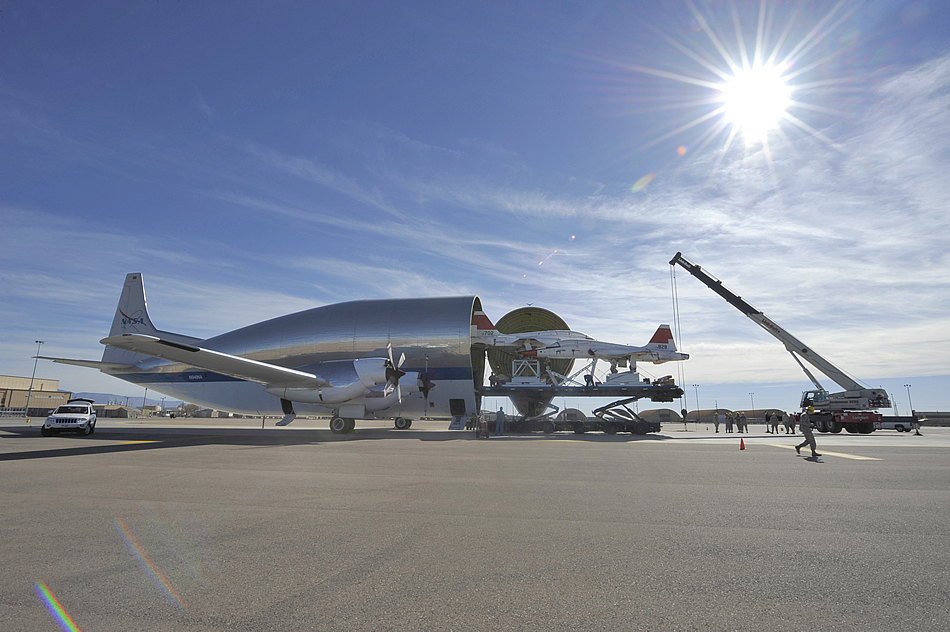
Posted 1/17/2011
Two T-38 Talons are unloaded from NASA's Super Guppy aircraft Dec. 14, 2010, after being shipped to Holloman Air Force Base, N.M. for inspection and repair. The base is the main depot in Air Combat Command for repairing the aircraft. After 450 flight hours at their operating location, the T-38s will come back for inspection. (U.S. Air Force photo/Senior Airman Veronica Stamps) | |
|   | | Fremo
Administrateur


messages : 24818
Inscrit le : 14/02/2009
Localisation : 7Seas
Nationalité : 
Médailles de mérite :  
 

 |  Sujet: Re: US Air Force - USAF Sujet: Re: US Air Force - USAF  Mar 18 Jan 2011 - 23:05 Mar 18 Jan 2011 - 23:05 | |
| on peut voir un sidewinder  - Citation :
- Airmen and people from the 1st Fighter Wing prepare aircraft before generating F-22 Raptors during an operational readiness exercise Jan. 8, 2011, at Joint Base Langley Eustis, Va. The 1st Fighter Wing, 633rd Air Base Wing and 192nd Fighter Wing tested their readiness ability over a two-day period.
_________________  | |
|   | | MAATAWI
Modérateur


messages : 14756
Inscrit le : 07/09/2009
Localisation : Maroc
Nationalité : 
Médailles de mérite :
 
 
 
 | |   | | MAATAWI
Modérateur


messages : 14756
Inscrit le : 07/09/2009
Localisation : Maroc
Nationalité : 
Médailles de mérite :
 
 
 
 |  Sujet: Re: US Air Force - USAF Sujet: Re: US Air Force - USAF  Ven 21 Jan 2011 - 12:19 Ven 21 Jan 2011 - 12:19 | |
| - Citation :
- Edwards officials developing new parachute system
EDWARDS AIR FORCE BASE, Calif. (AFNS) -- Officials here are creating a guardian angel system to help Air Force members who parachute to land safely and softly.
Officials are replacing the Air Force's nearly five-decades-old parachute system with a new one, called the Guardian Angel Advance Parachute System, which is designed for safer landings at higher altitudes.
Officials from the Air Force's official parachute test organization, which falls under the 418th Flight Test Squadron, are creating this new system.
GAAPS is a threefold system, which includes a freefall parachute system, a static-line parachute and a tandem parachute system. The parachute's canopy is made with a special type of fabric designed to allow the user to land at high altitudes.
"With the current systems, the descent rate is too fast at high altitudes," said 2nd Lt. Jonathan Sepp, a 418th airdrop engineer. "That's because our current systems were designed in the 1960s for landing at sea level, and that worked (well) for them then, but now we're in Afghanistan, so we have to develop something for the modern warfighter who has to land in austere mountain conditions."
GAAPS is designed to fit a variety of missions for rescue professionals. To accommodate a variety of mission needs, each of the parachute systems fits different situations.
A single pararescueman jumping into adverse terrain with a load of gear would typically use the single free fall system. In other cases, a pararescueman with a load of gear may need to be inserted low and fast, and will not need to steer the parachute. In that case he would use the static-line system. If a pararescueman needed to bring a medic with him, he could put the medic on a second harness connected to him, jumping with the tandem system.
With the team going into its third year of testing, safety is paramount and ensuring that a parachute system is safe requires a lot of scrupulous testing, Lieutenant Sepp said.
"We started testing in 2009. There have been a few road blocks that we ran into because experimental parachutes have a lot of things that have to be worked out before you give it the 100-percent thumbs up," Lieutenant Sepp said.
"We make sure the testing is really thorough and that we've worked out every kink before we even think about approving a system," he said.
The tests begin with functional testing on the ground to ensure that when the user tries to operate it, it will work the way it was intended.
"We started with different ground tests, like seeing how hard it is to pull certain handles and tensile tests on the ground to make sure certain things aren't going to break in the air when you strap a lot of weight to it," the lieutenant said.
"Currently, we're performing dummy tests where we strap the parachute to a dummy that simulates a human being, and push it out of an airplane to see how the system actually works in air," he said. "Then you have a lot of review boards, and that leads to live-jump testing where you actually put it on the test parachutists. After the test parachutists jump with it they review it and tell us how things worked."
While GAAPS is being created primarily for use by Air Force pararescuemen, Lieutenant Sepp said he believes that once this system is implemented it will be the primary system used by every military branch.
"The parachutes are designed for pararescuemen who are going to be landing in austere mountain conditions to rescue personnel," Lieutenant Sepp said. "But GAAPS is also going to take over for a lot of the current parachute systems and potentially be applied across the Air Force and the rest of the military once it's approved.
"The systems the Air Force has now are getting older, out of date and worn out so we need to replace them with new parachute systems and GAAPS is going to do that for us," he said. "It's going to allow people to land in a safer manner, carry more gear and accomplish the mission more effectively than they could've with the parachute systems we currently have."
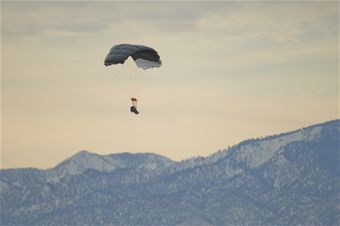
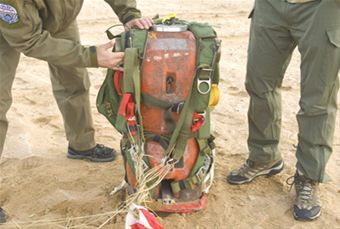
Members of the 418th Flight Test Squadron perform functional testing on the ground for the experimental parachute system called the Guardian Angel Advance Parachute System. GAAPS is a threefold parachute system, which includes a freefall parachute system, a static-line parachute and a tandem parachute system. The parachute's canopy is made with a special type of fabric designed to allow the user to land at high altitudes. (U.S. Air Force photo/Rob Densmore)
The GAAPS testing is scheduled to wrap up around the end of February 2011.
www.af.mil/news | |
|   | | MAATAWI
Modérateur


messages : 14756
Inscrit le : 07/09/2009
Localisation : Maroc
Nationalité : 
Médailles de mérite :
 
 
 
 |  Sujet: Re: US Air Force - USAF Sujet: Re: US Air Force - USAF  Mar 25 Jan 2011 - 17:13 Mar 25 Jan 2011 - 17:13 | |
| - Citation :
- F-15E flies with new radar system
1/24/2011 - EGLIN AIR FORCE BASE, Fla. (AFNS) -- Officials took a step forward in the F-15E Strike Eagle's continuous technological evolution as the Air Force's most versatile combat aircraft here Jan. 18.
Officials from the 46th Test Wing launched the fourth generation fighter for the first time with a new and improved radar system, the APG-82(V)1.
The APG-82 uses active electronically scanned array radar technology composed of numerous small solid-state transmit and receive modules. The standard radar, APG-70, is a mechanically scanned array housed in the nose of the aircraft. Although the current F-15E radar has undergone numerous updates and upgrades, it is still the same system the aircraft had on its maiden flight more than 24 years ago.
"We've been able to get more out of it, but at this point it's pretty much maxed out," said 1st Lt. Nathaniel Meier, a radar modernization project manager with the Operational Flight Program Combined Test Force.
The new radar lacks the motors and hydraulics of the old system and includes a new avionics and cooling system.
Aircraft radar continuously sends out and receives energy to identify objects or targets around it.
Due to its unique capabilities, the F-15E radar operates as air-to-air and air-to-ground radar, officials said.
"One AESA-equipped F-15E can detect and track multiple targets simultaneously and gain the same battle picture and prosecute the same number of attacks that currently require several mechanically scanned radar assets," said Brad Jones, the Boeing director for U.S. Air Force development programs. "Adding AESA multiplies the effectiveness of the F-15E."
The advantage AESA radar has over an MSA is its near-instantaneous ability to redirect its focus from air-to-air to air-to-ground mode, officials said.
By no longer having to wait for the array to physically move to a new area of interest, the aircrew receives better situational awareness in less time, Lieutenant Meier said.
The four-year-old project borrowed from existing technology to create the new system. The array system was taken from F-15C Eagle models and the avionics were borrowed from F-18 Hornets.
The reason for the change was to improve the entire aircraft's reliability, availability and maintainability, Lieutenant Meier said.
The new radar works as a plug-in-play system with newer, easily replaceable parts, the lieutenant said.
It's expected to have approximately a 20-fold improvement in aircraft reliability, he said.
The aircraft also stays mission-ready.
An average failure for the radar component was previously measured in tens of hours and can now be measured in hundreds of hours, Lieutenant Meier said.
The APG-82 has fewer moving parts and the new equipment lasts longer, which cuts down on the time needed for repairs, he said.
The modification of the aircraft, which began in June 2010, was a concerted effort by members of Boeing, the 46th Maintenance Group, Raytheon, the 46th Technical Support Squadron and the OFP CTF.
"Without their determination, (F-15E) RMP would not have been anywhere close to making its first flight," Lieutenant Meier said.
The developmental test flight was considered successful, and the aircrew members said they liked what they saw during the flight.
"There are huge performance increases," said Maj. Raja Chari, a 40th Flight Test Squadron member and the pilot for the first flight. "We're getting the benefit of two decades worth of technology. From what we saw in this flight, we're heading in the right direction."
The developmental test process is about building incrementally into testing more complicated functions of the equipment and finding any flaws and problems based on usage in specific test profiles.
"Really, the engineers put in the time and hard work," Major Chari said. "We have the easy part of seeing if it will do what they thought it would. It was interesting to see the engineers reacting and diagnosing the issues right away, based on our feedback."
Capt. Chris Dupin, a 40th FTS member and the weapons system officer for the first flight, said he noticed improved capabilities during the initial flight.
He said the radar was able to detect F-16s much farther away than ever before.
"The kill chain for anything is the ability to detect, identify, target and engage a threat," Captain Dupin said. "If we can detect an air target earlier or farther away, that leaves more time and space to complete the rest of the kill chain. Completing the kill chain faster and earlier means we're better able to gain or maintain airspace superiority."
The biggest "test" facing the project involves combining avionics and array systems from other aircraft and incorporating them into a totally different one.
"By using (government and commercial) off-the-shelf equipment, the Air Force is able to save a large amount of the development costs, but the challenge is integrating these new systems and making them work as one," Lieutenant Meier said.
Developmental testing is scheduled to continue through 2012, but the OFP CTF, being a shared unit of the 46th Test Wing and 53rd Wing, is unique in that its members can perform developmental tests while incorporating early operational testing.
Officials have begun modifying a 53rd Wing F-15E with the new radar and they plan to begin some of the operational type of testing as early as March.
The next stage of testing for the radar will be conducted by Air Force Operational Test and Evaluation Center officials before being incorporated in all F-15Es beginning in approximately 2014. /www.af.mil/news | |
|   | | MAATAWI
Modérateur


messages : 14756
Inscrit le : 07/09/2009
Localisation : Maroc
Nationalité : 
Médailles de mérite :
 
 
 
 |  Sujet: Re: US Air Force - USAF Sujet: Re: US Air Force - USAF  Jeu 27 Jan 2011 - 12:53 Jeu 27 Jan 2011 - 12:53 | |
| - Citation :
U.S. Air Force Awards $214 Million to Improve Space Situational Awareness
January 27, 2011 Administrator No comments

This image generated by NASA shows objects in Low Earth Orbit, the region of space within 2,000 km of the Earth's surface. Approximately 95% of these objects are orbital debris - i.e. 'space junk' made by inoperable satellites or disintegrated satellites or other spacecraft. Photo by NASA
Tens of thousands of small man-made objects known as ‘space junk’ are orbiting the earth, posing significant hazard to satellites, the International Space Station and other space hardware. Some objects are debris that separated from spacecraft in orbit while others are complete satellites that have ended their life and maintained in ‘parking’ orbit around earth.
While the U.S. is tracking space objects 10 cm or larger since the 1960s, the need for better tracking of space debris became critical after the February 10th, 2009 collision of a U.S. Iridium communications satellite and a Russian Cosmos 2251 communications satellite, which created hundreds more pieces of debris flying in low-earth orbit.
“The 2009 collision of an operational communications satellite with a defunct satellite illustrates the real risk space debris poses to both our manned and unmanned space missions,” said John Morse, director of Lockheed Martin’s Space Fence program. “Space situational awareness is a national security priority and Space Fence will greatly enhance our ability to track and catalog orbiting objects which number in the tens of thousands.”
This week the Raytheon Company, Integrated Defense Systems and Lockheed Martin Corporation, Mission Systems & Sensors have received two competitive orders worth $107 million each, for preliminary design of the Space Fence Program. Both companies should complete preliminary design, performance analysis and prototype evaluation by the summer of 2012. The follow-on production contract could be valued up to $3.5 billion and bring the system to operational capability by 2015.
The new system will offer much higher resolution, operating multiple radars transmitting in higher frequencies (S-Band), capable to detect and track very small objects in low Earth orbit. Current space tracking radars developed in the 1960s are operating in the lower VHF band. In addition to continuous tracking, the new system will be able to focus on high priority assets, alerting the space station, or other critical space assets in advance on potential collision with space debris. The new system will maintain interoperability with the current fence, to ensure uninterrupted transition to the new capability later in the decade.
defense-update | |
|   | | lida
Colonel-Major


messages : 2195
Inscrit le : 01/11/2008
Localisation : maroc
Nationalité : 
Médailles de mérite :  
 

 |  Sujet: Re: US Air Force - USAF Sujet: Re: US Air Force - USAF  Jeu 27 Jan 2011 - 22:56 Jeu 27 Jan 2011 - 22:56 | |
| - Citation :
- SOURCE:Flight International
USAF defends performance of Gorgon Stare sensor
By Gayle Putrich
US Air Force officials past and present have jumped to the defence of the service's much-touted new intelligence, surveillance and reconnaissance (ISR) system, after a draft report that detailed its testing as a flop circulated around the Beltway.
Gorgon Stare - billed as an "all-seeing eye" that puts a cluster of up to 12 cameras on a General Atomics MQ-9 Reaper unmanned air vehicle - was deemed "not operationally effective" and "not operationally suitable" by the 53rd Wing at Eglin AFB in Florida, which was charged with testing the system.
But retired Lt Gen David Deptula, who until last August was the USAF's deputy chief of staff for ISR, says the problems listed in the leaked report were caused by the testing process and human errors, and not by the system itself.
"The test programme was not sufficiently constructed to objectively evaluate the capabilities of the system," Deptula says. "The biggest issue is that the data the testers used for their report was primarily from the first part of the operational utility evaluation, during which there were definite problems. Many of them were procedural issues, not technology issues."
The air force also points out that the January memo includes issues that already have fixes in place, and that the service does not believe it will affect the deployment schedule. The USAF said in early January that the system was expected to be fielded "within two months".
According to the draft report, after conducting seven initial sorties totalling 64 flight hours, the test team called the system deficient and its imagery unusable, and a pause in testing was called as of 11 November to allow for software modifications and changes to the pod.
But even after the changes were made and tests resumed - eventually totalling 20 sorties and 234h in the air - the overall assessment was that Gorgon Stare "is not operationally effective and not operationally suitable". The report lists deficient infrared performance, "numerous" interoperability problems, a lack of stability and reliability problems.
The document, obtained and circulated by Winslow Wheeler, director of the Straus Military Reform Project at the Center for Defense Information, also says Gorgon Stare was "developed with no formal requirements", which is a growing trend for rapidly developed new technologies designed to meet specific needs in theatre.
"This system is being fielded to meet a Combatant Command requirement for a persistent, wide-area surveillance capability that allows multiple users to access the data from one platform," the USAF says.
Developed by Sierra Nevada, Gorgon Stare provides imagery from five electro-optical cameras and four infrared cameras in one pod through a separate processor pod for day- and night-time surveillance operations.
Senior air force officials say that with Gorgon Stare, the future of ISR would be limited only by the human ability to process the information gathered. The pod was also set to solve the shortage of Reapers by making one UAV capable of offering up to 50 video feeds.
| |
|   | | MAATAWI
Modérateur


messages : 14756
Inscrit le : 07/09/2009
Localisation : Maroc
Nationalité : 
Médailles de mérite :
 
 
 
 | |   | | MAATAWI
Modérateur


messages : 14756
Inscrit le : 07/09/2009
Localisation : Maroc
Nationalité : 
Médailles de mérite :
 
 
 
 |  Sujet: Re: US Air Force - USAF Sujet: Re: US Air Force - USAF  Mar 1 Fév 2011 - 13:22 Mar 1 Fév 2011 - 13:22 | |
| - Citation :
Boeing and iRobot Team Delivers 1st SUGVs to US Air Force

HUNTSVILLE, Ala., Jan. 31, 2011 — The Boeing Company [NYSE: BA] and partner iRobot Corp. [NASDAQ: IRBT] today announced that they have delivered the first 30 Small Unmanned Ground Vehicles (SUGV) under a contract with the U.S. Air Force for the service’s Explosive Ordnance Disposal (EOD) team. This is the first task order of an indefinite delivery, indefinite quantity contract which runs through September 2012.
“We are pleased to work with iRobot to enable Air Force EOD technicians to perform reconnaissance while reducing their exposure to unexploded ordnance,” said Mike Huddleston, Robotics program manager for Boeing Network & Tactical Systems.
“Unmanned ground vehicles have been saving lives for years on asymmetric battlefields,” said Robert Moses, president of iRobot’s Government and Industrial Robots division. “SUGV represents an important advancement in UGV technology because of its light weight and state-of-the-art capabilities. It gives warfighters the ability to deploy the robot at a moment’s notice when faced with a variety of dangerous missions.”
Boeing and iRobot developed the SUGV family of vehicles under a strategic alliance that began in 2007. The robot is designed to give warfighters real-time awareness of critical situations and allow them to complete missions from safe standoff distances. SUGV is ideal for a variety of mission types, including EOD, route clearance and reconnaissance. As the prime contractor, Boeing provides program management, contracts, and quality-control support from offices in Huntsville. iRobot is responsible for engineering, design, manufacturing, training and logistics services, with the majority of work conducted in Bedford, Mass.
iRobot designs and builds robots that make a difference. The company’s home robots help people with smarter ways to clean, and its government and industrial robots protect those in harm’s way. iRobot’s consumer and military robots feature iRobot Aware® robot intelligence systems, proprietary technology incorporating advanced concepts in navigation, mobility, manipulation and artificial intelligence. For more information about iRobot, visit www.irobot.com. aviationnews | |
|   | | Nano
Colonel


messages : 1650
Inscrit le : 18/05/2009
Localisation : Brest - Rabat
Nationalité : 
Médailles de mérite :
 

 |  Sujet: Re: US Air Force - USAF Sujet: Re: US Air Force - USAF  Mar 1 Fév 2011 - 17:05 Mar 1 Fév 2011 - 17:05 | |
|  .... Pardon | |
|   | | lida
Colonel-Major


messages : 2195
Inscrit le : 01/11/2008
Localisation : maroc
Nationalité : 
Médailles de mérite :  
 

 | |   | | lida
Colonel-Major


messages : 2195
Inscrit le : 01/11/2008
Localisation : maroc
Nationalité : 
Médailles de mérite :  
 

 |  Sujet: Re: US Air Force - USAF Sujet: Re: US Air Force - USAF  Mer 2 Fév 2011 - 20:38 Mer 2 Fév 2011 - 20:38 | |
| - Citation :
- SOURCE:Flight International
Sierra Nevada leads Super Tucano bid for USAF deal
By Stephen Trimble
Embraer has announced it is teaming with Sierra Nevada to build the Super Tucano in Jacksonville, Florida, if the partners can win a US Air Force contract that is scheduled to be awarded in June.
Sierra Nevada's role as the US-based prime contractor in Embraer's bid was revealed after both competitors - also including the Lockheed Martin/Hawker Beechcraft AT-6 - completed flight trials in the evaluation process for the light air support (LAS) contract.
The programme will supply up to 20 aircraft to serve as counter-insurgency trainers and fighters for Afghan pilots. The USAF also plans to buy 15 aircraft to serve as trainers for its own pilots, who could then be assigned to foreign "partners" fighting insurgents or terrorists.
Both competitors think the contract may ultimately be worth more than 35 aircraft, however.

In a 31 January briefing, Acir Padilha, vice-president of marketing and sales for Embraer's defence and security unit, predicted that overall sales could rise to 55 aircraft. Derek Hess, Hawker Beechcraft's director for AT-6 programmes, believes the market could be even larger.
The USAF launched the LAS contract in response to an emerging need to train pilots for counter-insurgency missions, which involve supporting friendly troops at close range, escorting convoys and providing armed reconnaissance over a wide area.
It follows the USAF's acquisition of the MC-12 Liberty - a Hawker Beechcraft King Air 350ER modified as a medium-altitude intelligence-gathering platform. The idea for "Project Liberty" came from the US Army's medium-altitude reconnaissance and surveillance system (MARSS), which supplied the King Air to the Iraqi air force.
Sierra Nevada was the army's contractor for the MARSS programme, and has now switched sides by teaming up with Embraer to offer the Super Tucano to the USAF.
The Super Tucano faces tough competition. Hawker Beechcraft is widely perceived as a US-based manufacturer, and is delivering hundreds of unarmed T-6As to the USAF and US Navy under the joint primary aircraft training system contract.
Sierra Nevada notes that USAF officials did not allow it to demonstrate the Super Tucano's ability to manoeuvre aerobatically with an unbalanced weapons load, which it considers to be a key performance advantage over the AT-6.
Meanwhile, Hawker Beechcraft is preparing for the next step in a separate AT-6 demonstration for the Air National Guard funded by the US Congress. The type will soon demonstrate delivering precision weapons for the first time, following tests of its combat sensors performed last October, Hess says.
Embraer touts the Super Tucano's flexibility with precision weapon load-outs as another key advantage, with 133 stores configurations already qualified, Padilha says. | |
|   | | Gémini
Colonel-Major


messages : 2735
Inscrit le : 09/12/2009
Localisation : Un peu partout!!!
Nationalité : 
Médailles de mérite :  
  
 |  Sujet: Re: US Air Force - USAF Sujet: Re: US Air Force - USAF  Mer 2 Fév 2011 - 20:44 Mer 2 Fév 2011 - 20:44 | |
| cela sent le F18 a plein nez pour la FAB .......  | |
|   | | Contenu sponsorisé
 |  Sujet: Re: US Air Force - USAF Sujet: Re: US Air Force - USAF  | |
| |
|   | | | | US Air Force - USAF |  |
|
Sujets similaires |  |
|
| | Permission de ce forum: | Vous ne pouvez pas répondre aux sujets dans ce forum
| |
| |
| |
|

